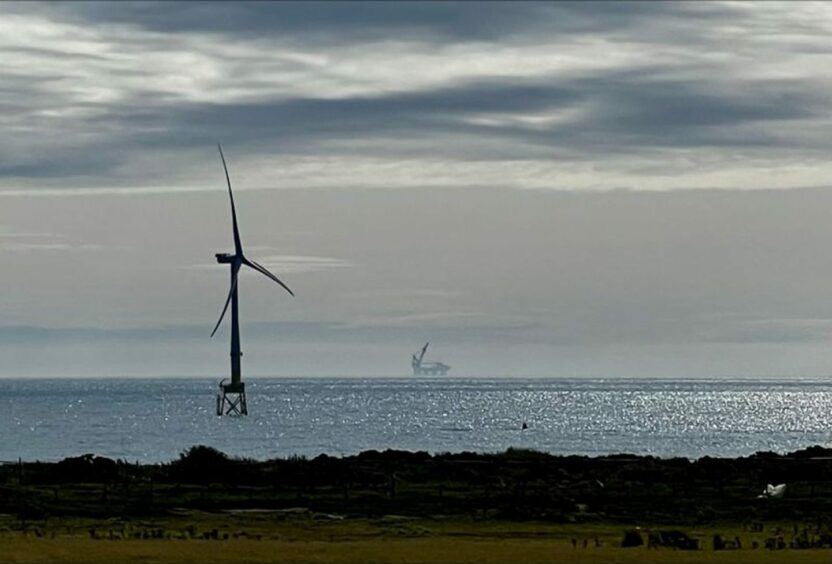
For some time industry observers have warned of a potential “clash” between oil and gas decommissioning and the offshore wind industry, as both vie for a limited supply of heavy lift vessels (HLVs).
As it stands today, that clash would appear to be more of a total wipeout.
It follows projections by trade body Offshore Energies UK in its Decommissioning Insight report, which forecasts the required removal of more than 100,000 tonnes of oil and gas topsides and substructures in 2026 alone, alongside the installation of over 200 wind turbines.
In 2031, the number of turbines installations is forecast to hit nearly 400 – by which point the UK is already supposed to have achieved its government-led 50GW wind capacity target.
Meanwhile, some of the region’s deepest fixed-bottom wind projects are about to enter construction, requiring foundations in excess of 100m and potentially weighing as much as 4,000 tonnes – structures so large that just a handful of vessels are big enough to move and install them.
That includes Heerema’s Sleipnir and Thialf crane vessels, the Saipem 7000 and Jan de Nul’s Les Alizés.
Others – such as the likes of Deme’s Orion and Seaway 7’s Alfa lift – have provided further flexibility to the market in recent years, but are unlikely to provide the scale, stability and carrying capacity required.
Even if that were not the case, these vessels are largely booked solid until the end of the decade, mostly outside of the region, all of which leaves little in the way of capacity for multi-gigawatt North Sea wind projects.
‘We should be doing this ourselves’
OEUK has suggested that “clever scheduling and fresh contracting models” could hold the answer to ensure the work is carried out.
Yet it also acknowledged there is “nothing stopping” the UK building its own fleet.
Formed last year, start-up Zero-C Offshore Construction hopes to answer that call, with plans to become the next “Tier 1” for HLVs through development of a fleet of “Installer Max” foundation installation vessels (FIVs).
Speaking with Energy Voice, Zero-C director and co-founder David Carr noted: “We are very much focused on the UK – not UK only, but UK initially – mainly because we are all Brits and we would love to see a Tier One player in this country.
“It’s just preposterous that we’ve got more of this [offshore wind] than anyone else per head of population than anywhere else in the world outside of China and yet big contracts that we have, we’re paying Dutch and Belgians to come and do it for us.
“Nothing against our Flemish cousins – but we really should be doing this ourselves.”
From the start, the company has also made clear its intention to be UK flagged and domiciled, and to use UK crews onboard.
Mr Carr acknowledges that a $400m newbuild installation vessel remains “quite a proposition” for investors and his small team, but that the North Sea market need is increasingly acute.
“Unless more of the foundation work gets done, there’s nothing for the WTIVs to work on, nothing for the cable layers to work on and definitely nothing for the CSOV’s to be maintaining because there’ll be nothing there to maintain,” he explains.
Even then, he suggests it’s still likely two or more such vessels will be needed to meet demand.
Grid before FID
During the past year he says the firm has qualified to bid with three large offshore wind farm developers and is now tailoring its design to the needs of specific projects.
Its next milestone would be to secure a multi-year charter, against which it can finalise investment and cut steel on a new build project in 2024.
“We have secured funding options to deliver that and are in the final stages of negotiating an LOI with a tier 1 shipyard,” he confirmed.
If contract awards do arrive in 2024, he suggests steel could be cut by the end of next year – though former boss Jon Oliver Bryce made a similar one-year prediction in late 2022.
In part, that’s because other hurdles stand in the way of progress on these mammoth projects – not least the lengthy wait for grid connections.
“[Developers] are sitting there with a chequebook ready to cut billions worth of supply chain cheques to start building foundations, ports, and hopefully invest in a newbuild ship to deal with some of these projects.
“But they’re not going to start cutting those cheques until they know they can actually plug their wind farm in at the end of the project,” he added.
Timely decisions are all the more important when considering the knock-on effects that a wind industry vessel – or other major supply chain awards – can generate around it.
“What you get when you have a vessel like this with a home port in Leith or in Middlesbrough, is a nucleus for the likes of OEG or James Fisher or Ventera to locate their renewable services all around.
“Because we’ll need grouting, we’ll need hammering, we’ll need noise curtains; we need all the other services that a vessel like this provides.
“How does a British company really get a foothold in all of that if they’ve got to Holland to try and grow around that?”
For now, David and his colleagues await the vital project FIDs that will enable them to move forward with their vessel plans.
Yet whatever the outcome of future contract awards, it’s hard to see how anything like 50GW will be achievable if Installer Max – or something very like it – does not set sail.
Recommended for you

 © Supplied by Zero-C Offshore
© Supplied by Zero-C Offshore